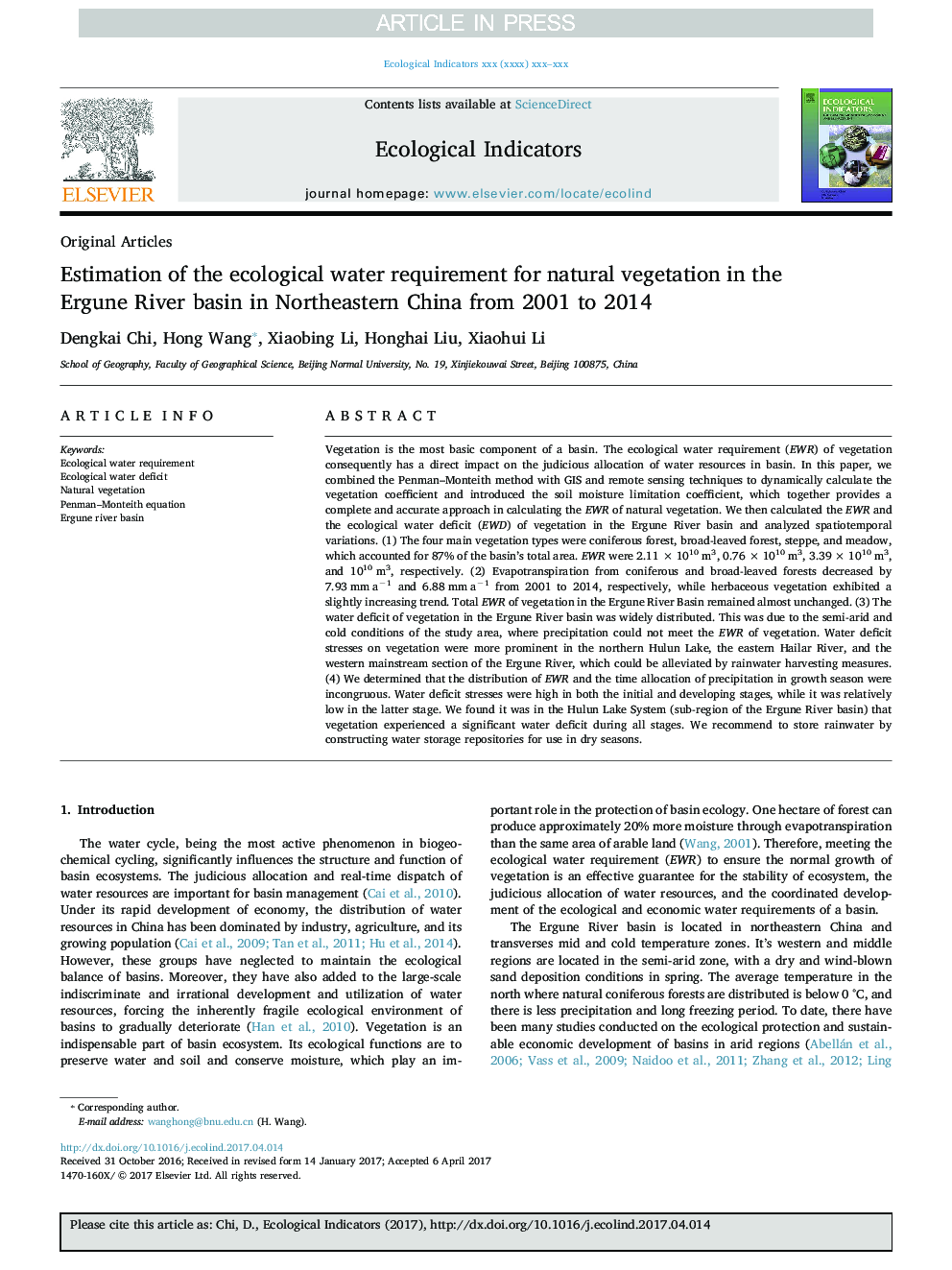| Article ID | Journal | Published Year | Pages | File Type |
|---|---|---|---|---|
| 8845225 | Ecological Indicators | 2018 | 10 Pages |
Abstract
Vegetation is the most basic component of a basin. The ecological water requirement (EWR) of vegetation consequently has a direct impact on the judicious allocation of water resources in basin. In this paper, we combined the Penman-Monteith method with GIS and remote sensing techniques to dynamically calculate the vegetation coefficient and introduced the soil moisture limitation coefficient, which together provides a complete and accurate approach in calculating the EWR of natural vegetation. We then calculated the EWR and the ecological water deficit (EWD) of vegetation in the Ergune River basin and analyzed spatiotemporal variations. (1) The four main vegetation types were coniferous forest, broad-leaved forest, steppe, and meadow, which accounted for 87% of the basin's total area. EWR were 2.11 Ã 1010 m3, 0.76 Ã 1010 m3, 3.39 Ã 1010 m3, and 1010 m3, respectively. (2) Evapotranspiration from coniferous and broad-leaved forests decreased by 7.93 mm aâ1 and 6.88 mm aâ1 from 2001 to 2014, respectively, while herbaceous vegetation exhibited a slightly increasing trend. Total EWR of vegetation in the Ergune River Basin remained almost unchanged. (3) The water deficit of vegetation in the Ergune River basin was widely distributed. This was due to the semi-arid and cold conditions of the study area, where precipitation could not meet the EWR of vegetation. Water deficit stresses on vegetation were more prominent in the northern Hulun Lake, the eastern Hailar River, and the western mainstream section of the Ergune River, which could be alleviated by rainwater harvesting measures. (4) We determined that the distribution of EWR and the time allocation of precipitation in growth season were incongruous. Water deficit stresses were high in both the initial and developing stages, while it was relatively low in the latter stage. We found it was in the Hulun Lake System (sub-region of the Ergune River basin) that vegetation experienced a significant water deficit during all stages. We recommend to store rainwater by constructing water storage repositories for use in dry seasons.
Related Topics
Life Sciences
Agricultural and Biological Sciences
Ecology, Evolution, Behavior and Systematics
Authors
Dengkai Chi, Hong Wang, Xiaobing Li, Honghai Liu, Xiaohui Li,
